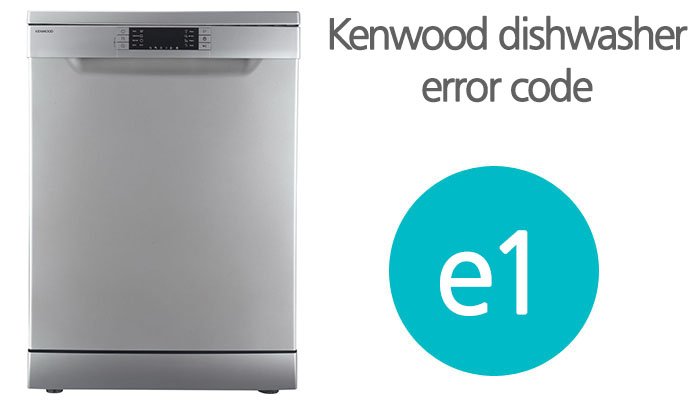
Our modern lifestyle owes much of its ease to advancements in home appliances, including the revolution in kitchen chores brought about by dishwashers. Among popular brands, Kenwood stands out, offering a range of dishwashers loved by users across the globe. However, like all appliances, Kenwood dishwashers can occasionally run into issues, and one frequent troublemaker is the E1 error code. In this piece, we’ll dissect the roots of this error code and deliver a detailed guide on resolving it.
The E1 error code on Kenwood dishwashers represents an issue with the water supply, more specifically, the water inlet pressure. Various conditions, such as a limited water supply, a dysfunctional water inlet valve, or a clog in the inlet hose, can trigger this error. A thorough comprehension of these root causes is the cornerstone of effective troubleshooting.
The Water Supply Issue
One common instigator of the E1 error code is a deficiency in the water supply. The source of this problem could be a low water pressure situation in your home, or the water supply may have been mistakenly shut off. When the dishwasher does not receive an adequate amount of water to function correctly, it signals this issue via the E1 error code.
To address this, verify that your home’s water supply is functioning and the pressure levels are sufficient for the operation of your dishwasher. If low water pressure is the issue, you may need to get in touch with your local water supply authorities.
Problem with the Water Inlet Valve
Kenwood dishwashers’ water inlet valve is a critical component that regulates the volume of water flowing into the machine. If this valve malfunctions or sustains damage, it may disrupt the flow of water, leading to an E1 error code display.
The most common solution to a defective water inlet valve is replacement. However, always remember to disconnect the dishwasher from its power source before attempting this to avoid any electrical hazards. If you’re uncomfortable with managing the machine’s electrical aspects, consider seeking help from a professional technician.
The Inlet Hose Blockage Scenario
The E1 error code can also be a result of a clog in the inlet hose. Over time, debris or mineral deposits may accumulate in the hose, obstructing the flow of water into the dishwasher.
The solution lies in disconnecting the hose and examining it for any potential blockages. If you find deposits of debris, thoroughly clean the hose before reinstalling it. If the hose itself is worn out or damaged, it may be time to procure a replacement.
Beyond the Basic Troubleshooting
If your dishwasher continues to display the E1 error code despite performing the aforementioned troubleshooting steps, you might need to reset your machine. Kenwood dishwashers come with an integrated system reset feature that can be activated by switching off the device, unplugging it, waiting for a couple of minutes, and then reconnecting it and powering it back on.
In some cases, the E1 error might stem from a software glitch. If that’s the case, Kenwood may offer a firmware update to address this issue. For such updates or further assistance, it’s always a good idea to check the Kenwood website or get in touch with their customer service.
Professional Assistance and Preventive Measures
While most issues with Kenwood dishwashers can be solved at home with a little initiative, there are times when professional intervention becomes necessary. If the E1 error code persists after trying all the recommended fixes, reach out to a Kenwood-approved service center.
Preventive maintenance can help avert such errors. Regular cleaning of the dishwasher filter, inspecting the water inlet hose, and running a cleaning cycle using a dishwasher-friendly cleaner are good habits to adopt.
To wrap up, while the Kenwood dishwasher E1 error code may be a hurdle, it’s not an insurmountable one. With a patient approach to troubleshooting, guided by the information provided here, you can restore your dishwasher to optimal functioning, prolonging its lifespan in the process.
